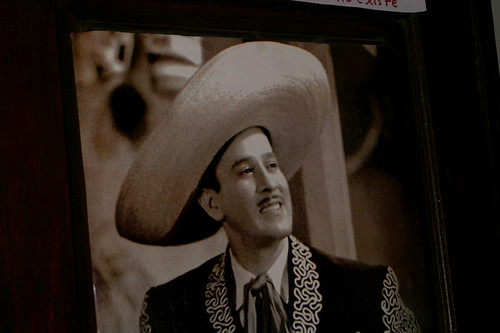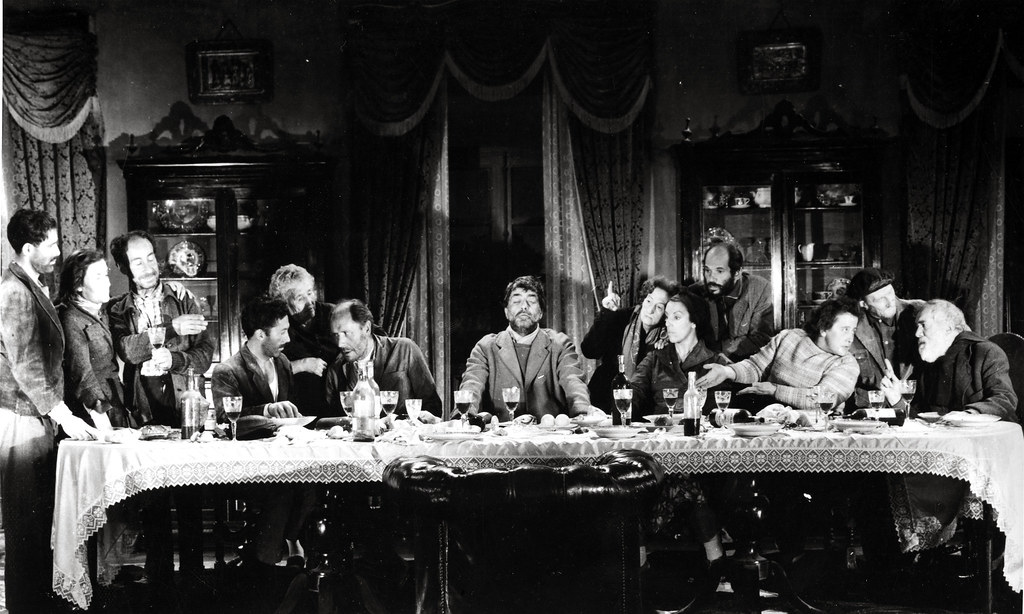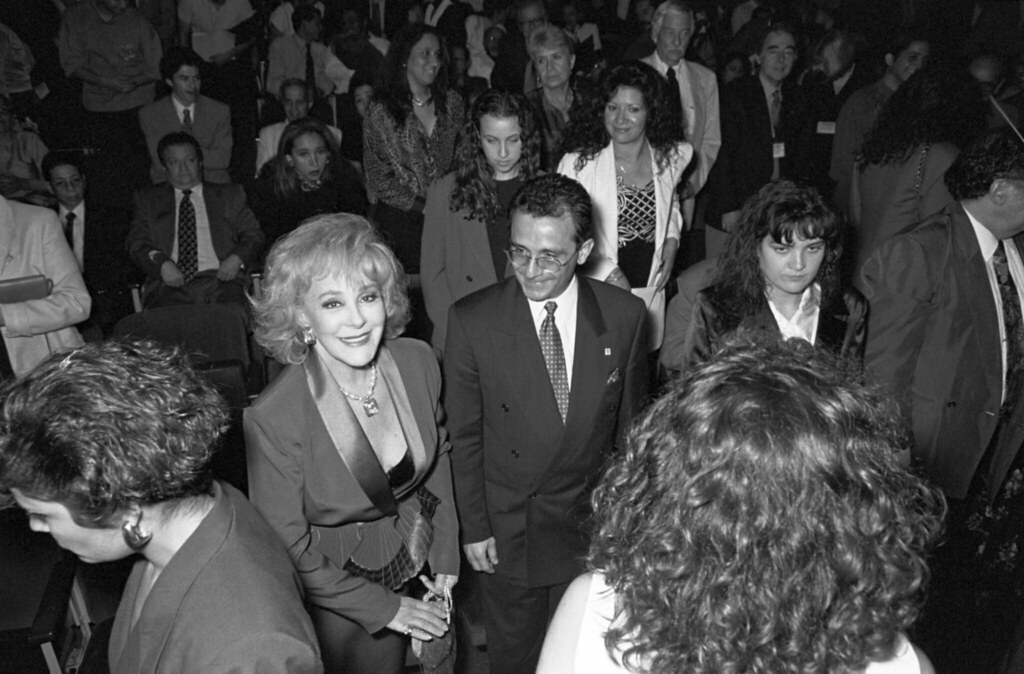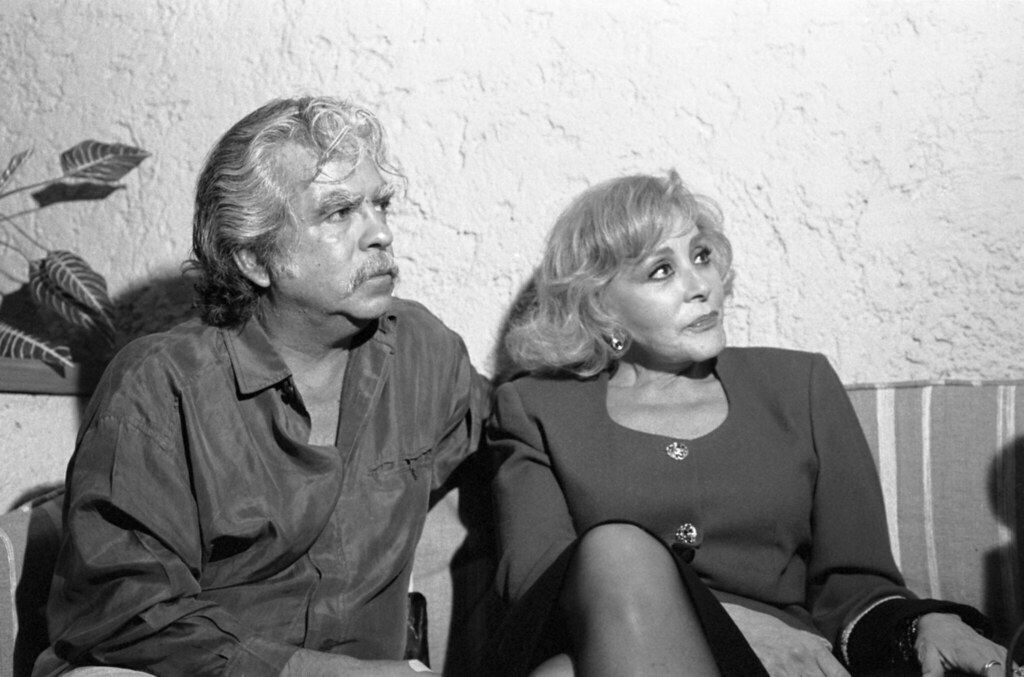
Silvia Pinal’s passing on November 28, in Mexico City, marked the end of an era for Mexican and international cinema. Believed to be 93 or 94 years old, the award-winning actress was widely celebrated as one of the preeminent stars of Mexico’s golden age of film. Her illustrious career, spanning more than six decades, left an indelible mark on the entertainment industry, earning her a reputation for balancing “urbane glamour with saucy humor and sensuality.” Mexico’s cultural ministry and prominent media outlets eulogized her as a “legendary Mexican actress” and “the last great diva of Mexican cinema.”
Pinal’s immense talent and versatility allowed her to traverse various artistic mediums, from the silver screen to stage and television, garnering critical acclaim and a devoted following. While a household name in her native land, her collaboration with the Spanish surrealist director Luis Buñuel brought her worldwide recognition, solidifying her place in the annals of global cinema history. This article delves into the profound impact of her early life and pivotal career milestones that shaped her extraordinary journey.
Her passing, attributed to complications from a urinary infection, prompted an outpouring of tributes from across Mexico and beyond, underscoring her stature as a cultural icon. President Claudia Sheinbaum of Mexico announced her death on social media, reflecting the national significance of her contributions. This exploration highlights the foundational elements of her artistry, from her beginnings to her groundbreaking international collaborations, painting a comprehensive picture of a true legend.

1. **The Early Years: From Guaymas to Stardom**
Silvia Pinal’s journey began in Guaymas, a port city in the state of Sonora, where she was reportedly born on September 12, 1931. Her birth was the result of a romance between her 15-year-old mother, María Luisa Hidalgo Aguilar, who worked in a restaurant, and the orchestra director Moisés Pasquel, who was already married. This early familial context, though not widely publicized during her peak, set the stage for a life that would challenge conventions and carve its own path.
She later adopted the surname of her stepfather, Luis G. Pinal, a journalist and politician, as a homage to the man who raised her. This decision not only provided her with a prominent surname but also reflected a personal bond that transcended biological ties. Despite her stepfather’s initial protestations that she pursue a more stable career, the young Silvia harbored ambitious dreams of becoming a movie star, a vision that would soon define her destiny.
By her early teens, Pinal had immersed herself in acting studies, determined to realize her cinematic aspirations. Her theatrical debut came through her work with the Cuban-born director Rafael Banquells, who would later become her first husband. These foundational experiences in theater were instrumental in honing her skills and preparing her for the demanding world of film. Her move to the big screen officially commenced in 1949 with a series of films, including “La Mujer Que Yo Perdí” (“The Woman I Lost”), signaling the arrival of a new star.

2. **Ascension in Mexico’s Golden Age of Cinema**
Silvia Pinal rapidly ascended to prominence within what is now revered as Mexico’s Golden Age of Cinema. Her charisma, distinctive talent, and captivating screen presence quickly established her as a formidable force in the industry. The Mexican television network Las Estrellas would later post on social media that she was her country’s “last diva,” a testament to her enduring impact and the unique glamour she brought to the screen during this foundational period.
Her cinematic breakthrough came in 1950, when at just 18 years old, she secured back-to-back leading roles alongside two of Mexico’s most celebrated film stars. She appeared with Germán Valdés, famously known as Tin-Tan, in the comedy “The King of the Neighborhood,” and subsequently with the comedy heavyweight Mario Moreno, or Cantinflas, in “The Doorman.” These early collaborations immediately placed her in the company of legends and showcased her ability to hold her own opposite established idols, establishing her as a serious contender for leading lady status.
Pinal was celebrated for her ability to embody a range of characters, often blending “urbane glamour with saucy humor and sensuality.” This unique combination allowed her to carve out a distinctive niche, contributing significantly to the stylistic and thematic diversity of Mexican cinema during its most vibrant era. Her performances were not merely decorative; they were dynamic, often portraying women with strength, wit, and an undeniable allure, which resonated deeply with audiences and critics alike.

3. **Ariel Award Triumphs: Acknowledged Excellence**
Silvia Pinal’s exceptional talent was formally recognized early in her career through the prestigious Ariel Awards, the Mexican equivalent of the Academy Awards. She earned her first of three competitive Ariel Awards as best supporting actress for her compelling performance in the 1952 film “Un Rincón Cerca del Cielo” (“A Corner Near Heaven”). This film saw her star alongside the dashing screen idol Pedro Infante, portraying a narrative of love and hardship experienced by a poor man moving to Mexico City.
This significant accolade acted as a catalyst, effectively vaulting her to lead actress status and confirming her rising stardom. The recognition underscored her burgeoning capabilities and opened doors to more prominent and challenging roles, allowing her to further showcase her versatility. Her ability to captivate audiences and critics alike with her nuanced performances was becoming increasingly evident, setting a high standard for her subsequent work in the industry.
Pinal continued to accumulate critical acclaim, taking home her second Ariel for best actress in 1956 for “Locura Pasional” (“Passionate Madness”). In this dramatic role, she portrayed a theater star who finds herself embroiled in the perilous schemes of her jealous and murderous husband, demonstrating her command of intense emotional landscapes. A year later, she secured her third Ariel Award for “La Dulce Enemiga” (“The Sweet Enemy”), where she played a complex femme fatale whose narrative unfolds through flashbacks narrated by the ghosts of her past lovers. These consecutive wins cemented her reputation as one of Mexico’s most talented and consistently recognized actresses.

4. **Collaborations with Iconic Leading Men**
Throughout her flourishing career in Mexico’s Golden Age of Cinema, Silvia Pinal frequently collaborated with some of the most celebrated and beloved leading men of her time. These partnerships were instrumental in shaping her screen persona and contributed significantly to the iconic status of many films from that era. She shared the screen with a constellation of stars whose names remain synonymous with Mexican cinematic excellence, creating memorable on-screen dynamics that captivated audiences.
Among her distinguished co-stars were figures like Pedro Infante, the charismatic screen idol and celebrated ranchera singer, with whom she worked on films such as “Un Rincón Cerca del Cielo” and “El Inocente.” In the latter, a 1956 comedy, she portrayed a “moneyed and capricious woman who takes up with an auto mechanic,” further illustrating her range. She also starred alongside Germán Valdés, known affectionately as Tin-Tan, and the unparalleled comedy heavyweight Mario Moreno, famously known as Cantinflas, in pivotal roles that underscored her comedic timing and dramatic depth.
These collaborations were not merely casting choices; they were cultural events that defined an era of Mexican entertainment. Working with such luminaries allowed Pinal to refine her craft and explore a broad spectrum of characters, from dramatic heroines to comedic foils. Her ability to establish a compelling rapport with these diverse actors solidified her position as a versatile and indispensable leading lady, contributing to a rich tapestry of films that continue to be cherished as classics of Mexican cinema.
Read more about: Déjà Vu on the Big Screen: These 12 A-List Actors Seemingly Play the Same Iconic Role, Time and Again

5. **The Transformative Partnership with Luis Buñuel: “Viridiana”**
For all her considerable success within Mexico, it was Silvia Pinal’s groundbreaking work with the Spanish surrealist director Luis Buñuel that catapulted her to international renown, making her a familiar name to cineastes across the globe. This partnership, described by Pinal herself as “the most important part of my career,” marked a pivotal turning point, allowing her to explore complex, avant-garde roles that challenged conventional cinematic narratives. It was a collaboration that transcended national borders and cemented her legacy in the history of world cinema.
Their transformative partnership began with the twisted period drama “Viridiana” (1961), a role Pinal secured through sheer determination. Her second of four husbands, the director and producer Gustavo Alatriste, who was producing the film, actively journeyed to Mr. Buñuel’s home to lobby for her to get the part. Pinal famously asserted, “I chose Buñuel, not he me,” highlighting her proactive approach and deep ambition to work with a filmmaker of his caliber. This initiative brought her into “a very closed world, where he was the king and was respected as such,” as she recalled in a 1996 interview.
“Viridiana” proved to be a cinematic landmark, though not without controversy. It was banned in Spain under the military dictatorship of Francisco Franco and vehemently denounced by the official Vatican newspaper for its perceived “blasphemous” criticism of the Catholic Church. Despite, or perhaps because of, this controversy, the film shared the prestigious Palme d’Or at the Cannes Film Festival, establishing its international significance and artistic merit, and ironically enhancing its mystique.
The New York Times critic Bosley Crowther lauded Ms. Pinal’s performance, describing “Viridiana” as a “grim and tumorous tale of a beautiful young religious novice who gets into an unholy mess when she gives up her holy calling to try to atone for a wrong she has done.” Crowther praised Pinal specifically, writing that she was “lovely and precisely as stiff and forbidding as she should be as the misguided novice,” acknowledging her precise embodiment of the character’s challenging nuances. Her portrayal of the platinum-blonde novice struggling with her faith was arguably the most impressive of her career, showcasing a profound depth and subtlety.

6. **Navigating the Absurdist World of Buñuel: “The Exterminating Angel” and “Simon of the Desert”**
Silvia Pinal’s partnership with Luis Buñuel did not end with “Viridiana”; she further cemented their creative alliance through two more highly acclaimed and enigmatic films. These subsequent collaborations explored even deeper realms of surrealism and social critique, positioning Pinal as a muse capable of embodying the complex, often baffling, visions of one of the greatest filmmakers of all time. This trilogy of films remains a cornerstone of both their legacies.
In 1962, Pinal starred in “The Exterminating Angel,” a sinister black comedy about a group of wealthy guests who find themselves inexplicably trapped at a dinner party in a Mexico City townhouse, leading to their gradual unraveling. Pinal portrayed Leticia, famously known as the Valkyrie, a character who ultimately plays a crucial role in helping the surviving guests escape their mysterious confinement. While the film was later anointed a classic, tying for 52nd in the 2022 Sight and Sound directors’ poll of the greatest films of all time, it famously baffled many viewers, including Pinal herself, who admitted in a 2006 interview, “To this day… I don’t know what that film is about.”
Their final collaboration in this iconic trilogy was the 45-minute film “Simon of the Desert” (1965). In this work, Pinal’s character attempts to tempt Saint Simeon Stylites from his post atop a pillar, where he had remained for an astonishing “six years, six months and six days to prove his devotion to God.” This film, like its predecessors, delves into themes of faith, temptation, and the absurd, with Pinal once again delivering a performance that was central to the film’s unsettling narrative.
Despite her occasional bewilderment regarding the precise meaning of Buñuel’s narratives, Pinal consistently expressed profound gratitude for the opportunity to work with such a master of the absurd. In a Criterion Collection interview, she reiterated, “Working with Buñuel was the most important part of my career. It accorded me a place in film archives around the world, and in the history of world cinema.” Her reflections underscore not only her humility but also her deep understanding of the historical significance of their shared artistic endeavors.

7. **Ventures Beyond Mexican Cinema: Hollywood and European Films**
While Silvia Pinal achieved her most profound artistic triumphs and widespread recognition within the vibrant landscape of Mexican cinema, her artistic ambitions were not confined to her native country. Her career trajectory included significant forays into international productions, notably in Europe and Hollywood, which further diversified her extensive filmography and showcased her versatility to a broader audience. These engagements demonstrated her capacity to transcend linguistic and cultural barriers, proving her appeal extended far beyond the Spanish-speaking world.
Among her notable international projects was the 1959 Italian comedy, “Uomini e Nobiluomini” (“Men and Noblemen”), where she starred alongside the renowned actor and director Vittorio De Sica and Elke Sommer. This European production allowed Pinal to immerse herself in a different cinematic tradition, contributing to a body of work that was truly global in scope. Such roles provided her with invaluable exposure and experience, enriching her perspective as an artist and cementing her reputation as an actress capable of performing on diverse international stages.
Her venture into Hollywood, albeit a “foray of sorts,” came with the 1969 English-language action movie “Shark,” a joint Mexican-American production. In this film, she co-starred with Burt Reynolds and worked under the direction of Samuel Fuller, marking a significant step into the English-speaking market. Additionally, she appeared in the 1968 MGM co-production “Guns for San Sebastian,” an action film that featured acclaimed stars such as Anthony Quinn and Charles Bronson. These roles, while perhaps less surreal than her Buñuel collaborations, underscored her ability to adapt to different genres and production scales, adding to her impressive array of over 100 film and television credits throughout her six-decade career.

8. **Influential Television Work: “Mujer, Casos de la Vida Real”**
Beyond her indelible mark on the silver screen and stage, Silvia Pinal cultivated an equally impactful presence in Mexican television, extending her reach into households across Latin America. Her work in this medium was not merely as an actress but also as a trailblazing producer and host, particularly with the anthology series “Mujer, Casos de la Vida Real” (“Woman, Real Life Cases”). This program became a cultural phenomenon, running for over two decades and establishing Pinal as a significant figure in broadcast media.
The series, which commenced in 1985 and continued until 2007, distinguished itself by presenting dramas based on true stories submitted by viewers. These narratives often centered on women facing various crises, including domestic abuse and other significant social challenges. By giving a platform to such sensitive topics, “Mujer, Casos de la Vida Real” courageously addressed social themes that had received scant attention in Mexico during the 1980s and 1990s, such as LGBT discrimination and women’s rights.
Pinal’s role as both presenter and producer of this hit program demonstrated her commitment to using entertainment as a vehicle for social commentary and awareness. The show’s widespread popularity throughout Latin America underscored her deep connection with audiences and her ability to resonate with their lived experiences. Through this influential television work, Silvia Pinal not only entertained but also informed and empowered, solidifying her legacy as an artist with a profound sense of social responsibility and an unwavering dedication to highlighting the complexities of women’s lives.

9. **Reign in Musical Theater**
Silvia Pinal’s artistic dominion extended comprehensively into the realm of musical theater, where she established herself not only as a celebrated performer but also as a formidable producer and entrepreneur. Her involvement with the stage was a testament to her versatile talents, allowing her to explore the dynamism of live performance after her foundational experiences in theater during her early career. This aspect of her career highlighted her multifaceted capabilities beyond the camera lens, showcasing her powerful stage presence and vocal prowess.
Pinal became a leading figure in Mexico’s musical theater scene, taking on starring roles and producing local adaptations of some of Broadway’s most iconic productions. Her credits include helming and starring in Mexican versions of beloved musicals such as “Hello, Dolly!,” “A Chorus Line,” and “Cats.” These ambitious undertakings not only entertained audiences but also elevated the standard of musical theater in Mexico, bringing world-class productions to local stages and demonstrating Pinal’s commitment to theatrical excellence.
Further cementing her influence in the theatrical world, Silvia Pinal’s entrepreneurial spirit led her to acquire and own several theaters in Mexico City. This strategic move allowed her greater control over artistic direction and production, making her a powerful force in the industry. Her dedication to the stage, whether performing under the spotlight or managing the logistical complexities of theater ownership, underscores a complete artistic vision that recognized the enduring power and unique magic of live performance. She embraced every facet of the entertainment world, leaving an indelible mark on Mexican theater.
Read more about: Beyond Belief: Famous Figures Who Actually Died on the Same Unforgettable Day

10. **Engagement in Politics**
In a career marked by relentless versatility, Silvia Pinal notably transitioned from the glare of film sets and theater stages to the corridors of political power, demonstrating a commitment to public service later in her life. This pivot into politics was a natural extension of her prominent public profile and her dedication to the well-being of her country. Her political endeavors were not merely ceremonial; she actively pursued and held various elected offices, contributing directly to Mexico’s governance.
Pinal served as a federal lawmaker in the early 1990s, taking her place in Mexico’s Chamber of Deputies. Her political journey further included winning seats in the Senate and the Mexico City local assembly, showcasing her sustained engagement with the political process. As a member of the Institutional Revolutionary Party, she utilized her platform to advocate for various causes, bringing her celebrity and influence to bear on legislative and social issues.
Her leadership extended to the cultural sector as well, as she notably headed the Mexican actors guild, ANDA (Asociación Nacional de Intérpretes), from 2010 to 2014. This role underscored her commitment to supporting her fellow artists and advocating for their rights and welfare. Her marriage to politician Tulio Hernández Gómez, a former governor of the State of Tlaxcala, further cemented her connection to political circles, providing a unique vantage point from which she navigated the complexities of both show business and statecraft. Pinal’s ability to juggle these demanding careers reflected her enduring drive and her deep-seated desire to contribute to the cultural and political fabric of Mexico.
Read more about: Antarctica’s Icy Archives: Unearthing Mysterious Human Remains and Historic Discoveries That Still Challenge Our Understanding

11. **The Lasting Legacy of the ‘Pinal Dynasty’**
Silvia Pinal’s influence extended far beyond her individual achievements, blossoming into a vibrant and enduring legacy known as the ‘Pinal Dynasty.’ This familial lineage of talent in the entertainment industry stands as a testament to her profound impact and the artistic environment she cultivated. Her personal life, intricately linked with her professional one, saw her children and grandchildren follow in her footsteps, cementing the family’s place in Mexican show business across multiple generations.
Pinal was married four times, and notably, three of her former spouses worked in show business, intertwining her personal and professional spheres. Her union with pop singer Enrique Guzmán produced two children who became prominent figures themselves: the actress Sylvia Pasquel and the musician Alejandra Guzmán. Alejandra, a Latin Grammy-winning artist, has achieved immense success, selling over 30 million albums, further illustrating the family’s significant contribution to music and entertainment.
Her son, Luis Enrique Guzmán, also pursued a career in music, while her other daughter, Viridiana, tragically passed away at 19 in a car accident, having also embarked on an acting path. The collective success and widespread involvement of her children and grandchildren in film, television, music, and modeling led to the affectionate and fitting moniker of the “Pinal Dynasty.” This extensive family tree of entertainers ensures that Silvia Pinal’s artistic spirit and trailblazing legacy continue to resonate and evolve through successive generations, keeping her name synonymous with Mexican entertainment excellence.

12. **Enduring Status as Mexico’s ‘Last Diva’ and Cultural Icon**
Silvia Pinal’s passing truly marked the end of an era, solidifying her enduring status as Mexico’s “last diva” and an unparalleled cultural icon. Her career, spanning over six decades, left an indelible mark on the entertainment industry, earning her profound eulogies from national institutions and prominent media outlets. This widespread recognition underscores her unique position in Mexican cultural history, embodying a blend of “urbane glamour with saucy humor and sensuality” that captivated generations.
Messages from Mexico’s cultural ministry and the television network Las Estrellas, among others, consistently referred to her as a “legendary Mexican actress” and “the last great diva of Mexican cinema.” Her image, characterized by “voluptuous blonde hair and bright red lipstick,” became instantly recognizable, symbolizing a golden age of elegance and dynamism. President Claudia Sheinbaum of Mexico’s announcement of her death on social media further highlighted the national significance of her contributions, reflecting how deeply she was woven into the fabric of Mexican society.
Perhaps one of the most poignant testaments to her iconic status is the immortalization of her beauty in a portrait painted by Diego Rivera, one of the greatest representatives of muralism in Mexico. This artistic honor places her alongside other revered figures, cementing her place not just in cinematic archives but in the broader pantheon of Mexican art and culture. For many, including those who grew up watching her black-and-white movies, Silvia Pinal remained a household name, her influence extending across borders to Spanish speakers worldwide. Her legacy is an “unforgettable” contribution to culture, a testament to an artist whose brilliance, versatility, and sheer force of personality created a legend that will continue to inspire for generations to come.
Silvia Pinal’s journey was a vibrant tapestry woven with threads of raw talent, relentless ambition, and an unwavering commitment to her craft. From the early stages of her career in Guaymas to her triumphs in Mexico’s Golden Age of Cinema, her groundbreaking collaborations with Luis Buñuel, and her ventures into international film and television, she continually redefined the boundaries of her artistry. Her profound impact on musical theater, her active engagement in politics, and the flourishing “Pinal Dynasty” she leaves behind all speak to a life lived with extraordinary purpose and an insatiable desire to create and contribute. As Mexico bids farewell to its “last great diva,” her legacy stands as a beacon of artistic excellence, a timeless reminder of a woman who shaped an era and whose star will undoubtedly continue to shine brightly in the annals of global entertainment history.



